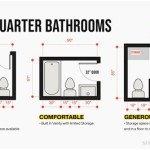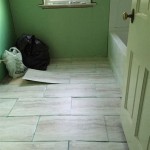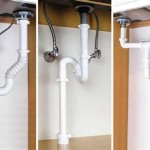How To Remove a Drawer From a Bathroom Vanity Unit
Removing a drawer from a bathroom vanity unit is a common task required for various reasons, including cleaning, repairs, and access to plumbing or electrical components behind the vanity. The process, while generally straightforward, can vary depending on the make and model of the vanity. Understanding the different drawer slide mechanisms and their release methods is crucial for a successful removal without causing damage to the drawer, slides, or vanity unit.
This article provides a comprehensive guide to removing drawers from bathroom vanity units, covering various types of drawer slide systems and offering detailed instructions for each. It also includes tips for troubleshooting common issues and ensuring a smooth reinstallation process.
Identifying the Drawer Slide Mechanism
Before attempting to remove a drawer, it is essential to identify the type of drawer slide mechanism used in the vanity. This is the most crucial step, as different mechanisms require different removal techniques. The most common types include:
- Side-Mounted Slides: These are the most prevalent type, typically found on older or less expensive vanities. They are attached to the sides of the drawer and the interior sides of the vanity cabinet.
- Bottom-Mounted Slides: These slides are attached to the bottom edges of the drawer and the bottom interior of the vanity cabinet. They are often found in more modern and higher-quality vanities.
- Center-Mounted Slides: This type features a single slide that runs along the center of the drawer and the vanity cabinet's frame. They are less common but can be found in some vanity designs.
- Soft-Close Slides: Found in higher-end vanities, these slides incorporate a mechanism that gently pulls the drawer closed, preventing slamming. They may have visible release levers or hidden mechanisms.
Once the type of drawer slide is identified, the appropriate removal technique can be employed.
Removing Drawers with Side-Mounted Slides: The Lever Release Method
Side-mounted slides often utilize a lever release mechanism for easy drawer removal. The process typically involves the following steps:
Step 1: Empty the Drawer. Before attempting to remove the drawer, ensure that it is completely empty. This reduces the weight and makes the process easier, as well as preventing items from falling out and potentially causing damage or injury.
Step 2: Locate the Release Levers. Open the drawer fully. On most side-mounted slides, there will be a small plastic lever or clip on each side of the drawer, attached to the slide mechanism. These levers are usually colored (often black or gray) and are located towards the rear of the drawer.
Step 3: Activate the Release Levers. This is the critical step. The levers typically need to be pushed up on one side and down on the other simultaneously. The specific direction might vary slightly depending on the manufacturer, so it may be necessary to experiment gently. Apply slight pressure while trying to pull the drawer forward. If the levers are correctly activated, the drawer should begin to slide out.
Step 4: Remove the Drawer. Once the drawer is disengaged from the slides, carefully pull it straight out of the vanity unit. Ensure that the drawer is supported to prevent it from falling and causing damage.
Step 5: Examine the Slides (Optional). After removing the drawer, take a moment to inspect the slides. This is a good opportunity to clean them, lubricate them with silicone spray, or identify any potential damage that may need repair or replacement.
Removing Drawers with Side-Mounted Slides: The Friction Release Method
Some side-mounted slides, especially older models, may not have visible release levers. These often rely on a friction-based release mechanism. The removal process is slightly different:
Step 1: Empty the Drawer. As with lever release mechanisms, ensure the drawer is empty before proceeding.
Step 2: Fully Extend the Drawer. Pull the drawer out as far as it will go. The slides will likely reach a stopping point, preventing further extension.
Step 3: Apply Gentle Force. At the stopping point, apply a gentle but firm pulling force while simultaneously wiggling the drawer from side to side. The goal is to overcome the friction holding the drawer in place. Avoid using excessive force, as this could damage the slides or the drawer itself.
Step 4: Remove the Drawer. Once the friction is overcome, the drawer should slide out. Support the drawer as it comes free to prevent it from falling.
Step 5: Inspect the Slides (Optional). Inspect the slides for any signs of wear, damage, or debris. Clean and lubricate as needed.
Removing Drawers with Bottom-Mounted Slides
Bottom-mounted slides can vary in their release mechanism. Some have a visible lever or clip, while others rely on a friction fit. The following steps outline the general process:
Step 1: Empty the Drawer. Ensure the drawer is empty to minimize weight and prevent damage.
Step 2: Locate the Release Mechanism. Examine the bottom of the drawer, near the slides. Look for small levers or clips that may need to be activated. Some bottom-mounted slides may not have visible releases and rely on a friction fit.
Step 3a: Activate Release Levers (If Present). If levers are present, they typically need to be pressed or pulled to release the drawer. The specific mechanism will vary depending on the manufacturer. Try manipulating the levers while gently pulling the drawer forward.
Step 3b: Overcoming Friction Fit (If No Levers are Present). If there are no visible release levers, the drawer likely relies on a friction fit. In this case, try lifting the drawer slightly while pulling it forward. Wiggling the drawer from side to side can also help to disengage it from the slides. Be careful not to apply excessive force, as this could damage the slides or the drawer.
Step 4: Remove the Drawer. Once the drawer is disengaged, carefully pull it straight out of the vanity unit. Support the drawer to prevent it from falling.
Step 5: Inspect the Slides (Optional). Inspect the slides for damage, wear, or debris. Clean and lubricate them as needed.
Removing Drawers with Center-Mounted Slides
Center-mounted slides are less common, but their removal is usually relatively straightforward. They typically utilize a single slide that runs along the center of the drawer.
Step 1: Empty the Drawer. Ensure the drawer is empty before proceeding.
Step 2: Fully Extend the Drawer. Pull the drawer out as far as it will go. There may be a stopping point.
Step 3: Locate the Release Mechanism. Examine the center slide for a release mechanism. This may be a lever, a clip, or a simple friction fit. Often, a slight lift or downward pressure is required to disengage the drawer from the slide.
Step 4: Activate the Release (If Present). If a lever or clip is present, activate it according to its design. This may involve pushing, pulling, or lifting the lever.
Step 5: Remove the Drawer. With the release activated (if applicable), carefully lift the drawer slightly and pull it forward. If there is no release mechanism, gently lift the drawer and wiggle it from side to side while pulling it forward. The center slide should disengage, allowing the drawer to be removed.
Step 6: Inspect the Slide (Optional). Inspect the slide for damage or debris. Clean and lubricate as needed.
Troubleshooting Common Issues
Despite these instructions, some issues might arise during the drawer removal process. Here are some common problems and their solutions:
Drawer Will Not Budge: If the drawer refuses to move, double-check that all release mechanisms are properly activated. Apply gentle but firm pressure while wiggling the drawer. Avoid using excessive force, as this could cause damage. Inspect the slides for any obstructions or damage.
Release Levers are Stuck: If the release levers are stuck, try applying a small amount of lubricant (such as WD-40 or silicone spray) to the levers and the surrounding area. Allow the lubricant to penetrate for a few minutes before attempting to move the levers again. Be gentle, as forcing the levers could break them.
Drawer Slides are Damaged: If the drawer slides are damaged, they may need to be repaired or replaced. Replacement slides can be purchased at most hardware stores. When replacing slides, ensure that the new slides are compatible with the existing vanity unit and drawer.
Drawer is Misaligned: If the drawer is misaligned, it may be difficult to remove. Try lifting the drawer slightly while pulling it forward. Wiggling the drawer from side to side can also help to disengage it from the slides. Verify that the slides are properly aligned before attempting to reinstall the drawer.
Reinstalling the Drawer
After the necessary work is completed behind the vanity or the drawer itself has been cleaned or repaired, the drawer needs to be reinstalled. The reinstallation process is essentially the reverse of the removal process. Here are some general guidelines:
Step 1: Align the Drawer Slides. Ensure that the drawer slides on the drawer are aligned with the corresponding slides inside the vanity cabinet. Refer to notes or pictures taken during the removal process if necessary.
Step 2: Insert the Drawer Slides. Carefully insert the drawer slides into the corresponding slides inside the vanity cabinet. Ensure that the slides are fully engaged.
Step 3: Push the Drawer In. Push the drawer into the vanity unit until it is fully closed. Listen for a click or snap, indicating that the drawer is securely in place.
Step 4: Test the Drawer. Open and close the drawer several times to ensure that it is functioning smoothly and correctly. Check for any signs of misalignment or binding. If the drawer does not operate smoothly, recheck the alignment of the slides and repeat the reinstallation process.
Step 5: Adjust as Needed. Some drawer slides have adjustment screws that allow for fine-tuning of the drawer's alignment. If the drawer is not properly aligned, use these screws to make the necessary adjustments. Typically, these screws are found on the drawer slides themselves.
Following these steps will allow for the successful removal and reinstallation of drawers in most bathroom vanity units. Remember to always exercise caution and avoid using excessive force to prevent damage to the drawer, slides, or vanity unit.

Laufen Vanity Units How To Remove And Insert The Drawers

Laufen Vanity Units How To Remove And Insert The Drawers

How To Remove And Re Install A Lux Vanity Drawer V121 V980

Drawer How To Remove Bathroom Sink Vanity Kitchen Cabinets Draw Rails Install

Bathroom Vanity Remove The Drawers

Remove And Put Back Vanity Drawers

Bathroom Vanity Remove The Drawers

How To Remove Drawers With The Most Common Types Of Drawer Slides

Repairing A Water Damaged Bathroom Vanity

How To Paint Bathroom Vanity Cabinets Tutorial Benjamin Moore
Related Posts







